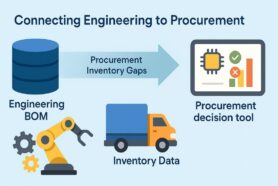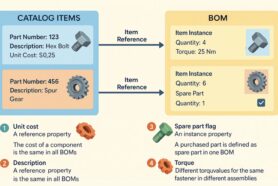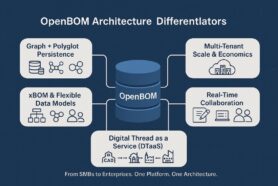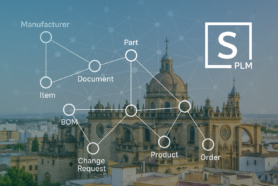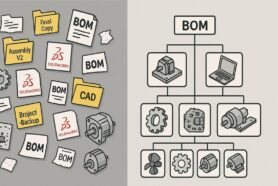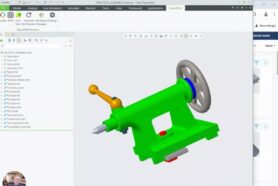
No matter what business you’re in, chances are that new product development (NPD) is a key part of your success. After all, what good is it if it’s not constantly creating new products or services that customers want? But developing new products is no small feat—it’s a complex process that requires careful planning and execution. It demands from all employees, contractors, and suppliers to work together seamlessly. While the demand of all customers to get products as soon as possible and shorten product development time, the complexity of products, financial analysis, customer needs, and supply chain together create a big deal of challenges. It can easily slow down all processes and crash the introduction of a new product to the market fast. Which ends up with bad sales for your organization. After speaking with thousands of engineering teams in manufacturing companies, we found that there is one big thing that can create a difference in product development – to make data sharing easy and effortless, to connect people in engineering and procurement by providing a seamless data handover and Bill of Materials sharing.
Why Bill of Materials?
One of the most important aspects of new product development is the bill of materials (BOM). The BOM is essentially a complex structure of all the raw materials, components, materials and components that are required to create a finished product. It sounds simple enough, but there’s more to it than meets the eye. It includes a full set of details about what is included, the specification of components and assemblies, vendors you can buy or order from, and also a foundation of the financial model (costing) that needs to be made. In this blog post, we’ll take a closer look at BOMs and how they can help you catch mistakes early in the product development process.
Without a Bill of Materials, it is easier to develop a gap between product design, meeting customer needs, and specifications of all materials you need. Managing all this data is a complex process that requires the organization of the system capable of managing all information needed to manufacture the product, creating relationships of how this information is all related together during the product development.
Why Bills of Materials are Important in NPD?
As we mentioned earlier, bills of materials are essential for keeping track of all the materials and components that are required to create a product. But why exactly are they so important?
There are a few key reasons:
- BOMs help ensures that you have all the materials and components on hand that you need to create a product. This is especially important if you’re working with outside vendors or suppliers.
- BOMs can also help you catch errors and mistakes early on in the product development process. For example, if you forget to include a critical component in the BOM, you’ll know right away so that you can make the necessary corrections before proceeding any further.
- BOMs can also help you estimate production costs more accurately. This information can be helpful when it comes time to price your product.
- finally, having a well-organized BOM can simply make the product development process run more smoothly overall. When everything is organized and accounted for from the start, it’s less likely that things will get forgotten or lost in the shuffle later on down the line.
Creating an Effective Bill of Materials
Now that we’ve talked about why bills of materials are so important in new product development, let’s take a look at how to create an effective one. Here are a few tips to keep in mind:
- Start by capturing all design information from all CAD systems (thanks to OpenBOM integrations allowing seamless capture of all data and files). Capture not only mechanical but electronics, software, and other information.
- Setup Part Numbers. Assign unique identification numbers to each item on your list. This will make it easier to keep track of everything as your project progresses.
- Continue sharing BOM with your team and reviewing all materials and components that you’ll need for your product. Thanks to OpenBOM real-time data sharing, it is very easy to do. All team members can work simultaneously which eliminates delays and wrong data sending. Be as comprehensive as possible—you can always revise your list later on if needed.
- Include vendor information for each item on your list. This might include contact information, lead times, minimum order quantities, etc. This information will be useful later on when it comes time to place orders for materials and components. Thanks to the OpenBOM flexible data model, you can add any information.
- Organize your list into categories and subcategories as needed. You can use custom attributes in OpenBOM to filter data and user-defined views to keep it organized. This will make it easier to find specific items when you need them later on down the line.
Streamline BOM to Ordering Process
The Bill of Materials (BOM) is a central place where the design team builds an initial bill of materials and shares it with the rest of the company. One of the most essential elements of this process is to extend it and connect the procurement team with the Bill of Materials. Not only will you ensure that purchasing has accurate information but you’ll also be able to share all product information earlier with the procurement and production planning team. It saves time and allows for a decrease in overall new product development risks.
Conclusion:
As you can see, bills of materials play an important role in new product development. OpenBOM can facilitate communication and connect management, technologies, and people responsible for design and procurement, which is extremely important for modern distributed teams delivering new products. It brings completed detailed information about what is needed for manufacturing. By taking the time to create an effective BOM early on in the process, you can save yourself time and headaches later on down the line.
OpenBOM provides super powerful tools allowing the creation of a full product structure definition, all components, and alternative data sources. OpenBOM allows you to create a digital thread sharing the data from design to procurement, and, by doing so, bringing real digital transformation to the companies.
Now you have full confidence that the product will be built according to requirements with all vendors and contractors communicating seamlessly using the OpenBOM solution. So the next time you embark on a new product development project, make sure to include bills of materials as part of your planning!
REGISTER FOR FREE to get access to OpenBOM and start a free 14-day trial.
Best, Oleg
Join our newsletter to receive a weekly portion of news, articles, and tips about OpenBOM and our community.


